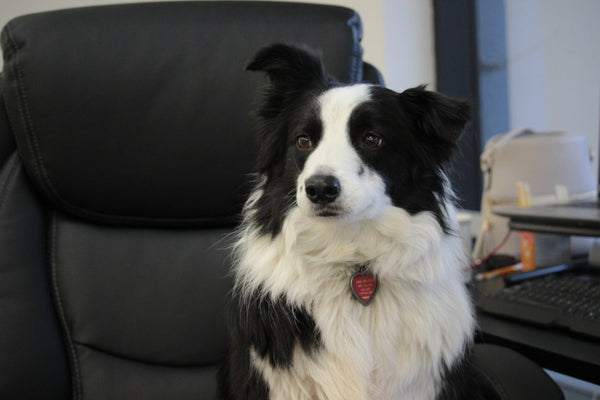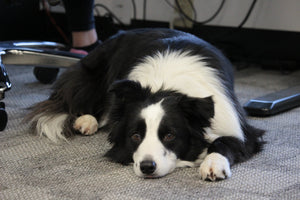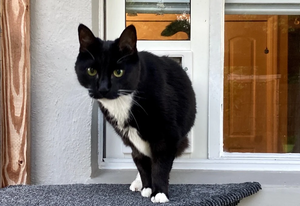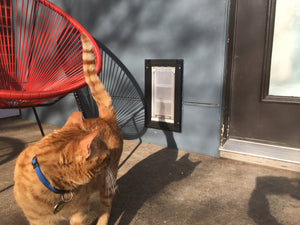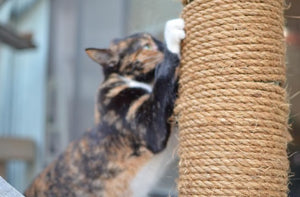A Healthy Dog is a Happy Dog!
You've heard it a million times, and for good reason: a dog is man's best friend. Our adorable furry friends are always there for us, providing companionship, friendship, and undying loyalty unlike any other pet. This is a two-way street, as intelligent and instinctual as dogs are it's important for us to realize dogs depend on us for their wellbeing. As dog parents, we ask ourselves often: "Is my dog happy?" You'll always want to make sure that you prepare your pup for anything! It’s a dog owner's responsibility to reciprocate their love, to show them companionship and affection, and to make sure their dog's life is wonderful and happy.
An Active Pet is a Healthy Pet
As with humans, dog happiness is linked to dog health. It is our responsibility as pet owners to maintain our pet’s good health, and making sure that they have an engaging lifestyle! Knowing how to make your dog happy starts with knowing how to keep them healthy!
Dogs get bored, and when dogs get bored you end up with pillows gutted, furniture chewed up, and your signed copy of The White Album lying in pieces on the floor. This is why your dog needs mental stimulation. A great way to fight against a bored dog is through physical activity. Daily exercise is crucial for their physical health. Exercise strengthens their heart, entertains them, and keeps them stimulated.

According to the American Society for the Prevention of Cruelty to Animals (ASPCA), an active dog is less likely to be destructive, less likely to bark incessantly, and will be more social to humans and other animals.
The level of physical needs will depend on the breed of dog you have. A pit bull would need longer daily walks than a chihuahua, and puppies need more exercise than older dogs. Make sure to research a dog breed's needs and see if their required level of physical activity fits your lifestyle. Some ideas to exercise your dog include:
-
Take the scenic route.
- The ASPCA suggests at least 30 minutes of exercise per day. A good way to get it is to take them out on a walk, giving you both great exercise!
-
Take your dog to the dog park.
- Dog parks can be doggie heaven; not only do they get the exercise they need, but they also get to interact with other dogs and stimulate that need for socializing
-
Summer Swimming
- Swimming can be a much needed release for your dogs. It is a great aerobic exercise and can help them cool off during those hot summer months. However, swimming isn't something all dogs enjoy, so slowly introduce them and have patience.
Obviously this list is not exhaustive, there are millions of things you can do to ensure your dog is getting the exercise they need. The important thing is that they are getting it, even when you're not around! A pet door is a great solution to give them free reign of their comings and goings. Install one in a door, in a wall, or even in a window! It keeps them from getting bored, allows them to come and go as they please, and reduces the risk of any accidents indoors.
Social Life

Dogs, like humans, are social animals. They thrive on stimulation and interaction and one of the most impactful things you can do for your dog’s health is teaching them to be social via dog training. This starts at a young age, and the more they interact with dogs, other animals, or humans, the more comfortable they will be as adult dogs in those situations.
Slowly introduce them to others, both humans and animals, then build up to more social interactions. Get them acclimated to being around others and their lives will be so much more enriched.
A well-acclimated dog opens up so many more doors for you and your pet, you will be able to go to pet-friendly stores and restaurants without your dog panicking or becoming aggressive. You will give them the opportunity to make friends by taking them to the dog park and not have to worry about your dog's inability to socialize. Eventually, they may even be able to go on play dates with other dogs. If you are having trouble socializing your dog, you need to take them to a certified dog trainer so that they can safely interact with new dogs. If you do this, you will be giving your dog a much higher quality of life from when they are a pup to a senior dog if they know how to interact with others.
Dieting & Care

We all love to reward our good boys and girls; we have the tendency to show them love with snacks and treats. While these are good ways to show a job well done, we can get a bit carried away with the treats and that can lead to weight and health issues. Monitoring their weight with a healthy diet is a great way of reducing the risk of disease.
A dog that is 10%-20% above their ideal weight is considered overweight, while over 20% is considered obese. Obese dogs are more likely to develop health problems like cancer, diabetes, and heart disease.Remember that dogs do not have the same metabolism as us, and many humans foods can cause cause problems for your dog. Some foods your dog should avoid include:
-
- Grapes
- Raisins
- Avocados
- Nuts
- Alcohol
A good habit to get into is to stop giving your dog food from your table. Not only do you decrease the risk of them consuming food that’s bad for them but you also teach them to not beg for food while you are eating.
If you are going to give your pet food from the table, make sure that it is pet safe to eat. There are plenty of foods, such as chocolate, that can be deadly for dogs. If your dog consumes a large amount of bad food, contact the ASPCA animal poison control center to learn what you should to next.
Another good habit is to reward your dog with chew toys, frisbees, or puzzle toys instead of treats while teaching them a new trick. That way, your dog doesn't eat more than they need to and they get to play with a new toy.
A balanced diet for dogs isn't easy; there are a lot of factors that go into a well-balanced diet. It varies on the breed, size, and age, but a good diet is a crucial part of good dog care.
Signs of Good & Bad Health
At the end of the day, no one knows your dog better than you, and monitoring their behaviour, level of activity, and appearance are good ways to measure the health of your pup. Be aware and cautious of possible doggy sicknesses that your pup can catch, like Lyme Disease in Dogs and how to treat and prevent it. Here are some warning signs to look out for:
- Skin: Healthy skin should not have scabs, it should be smooth, no flakes or red areas
- Coat: Consistently check your pets coat or signs of fleas or ticks. Black fuzz can be flea droppings.
- Mouth: Their mouth should not have any sores, their gums should be firm and pink or sometimes black depending on the breed.
- Eyes: Mucus and teary eyes are normal but they should not be excessive. Eyes should be clear and the whites should not look yellow.
If you notice that your dog is acting strange, is vomiting or has prolonged diarrhea, difficulty breathing, or changes in their appetite or sleeping patterns it is a good idea to visit your vet. Remember to visit the vet at least once a year for a checkup and keep your dog well-groomed, brushing their hair, and trimming their nails.
A great preventative, dental care step you can take to fight off dental disease is to brush your dog's teeth and gums with toothpaste. It is also good to looking into spaying and neutering your dogs in order to cut back on aggression and possible health complications.
Your dog loves you, and they will always be there for you. Through thick and thin, we can always count on their undying love and wonderful cuddle sessions. Show the love in return, show them an amazing life by following these pet care health tips to keep them away from harm, and healthy and happy for years to come.
Want to know how we keep our office doggies healthy? Take a look at our Office Puppy Diaries Volume 2: Staying Healthy.

